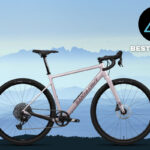When it comes to motorcycle riding, safety is paramount, and a full-face helmet is your first line of defense. Selecting the right biker helmet full face is a critical decision that goes beyond just style. It’s about ensuring optimal protection and comfort on every ride. But with a vast array of options available, knowing what to look for can be overwhelming. This guide breaks down the essential factors to consider when choosing a full face biker helmet, ensuring you make an informed choice for your safety and riding enjoyment.
Key Considerations for Biker Helmets Full Face
To make the best decision, it’s crucial to evaluate several key features that contribute to both the safety and comfort of your Biker Helmets Full Face. Let’s delve into each of these aspects:
Safety Certifications: Your Assurance of Protection
Safety certifications are non-negotiable when choosing biker helmets full face. These certifications indicate that the helmet has been rigorously tested and meets specific safety standards. Look for certifications like DOT (Department of Transportation), ECE (Economic Commission for Europe), or Snell Memorial Foundation.
- DOT: A mandatory standard in the United States, DOT certification ensures basic safety requirements are met.
- ECE: A widely recognized international standard, ECE 22.05 (and the newer 22.06) certification is accepted in numerous countries and often considered more stringent than DOT.
- Snell: A voluntary, non-profit standard known for its rigorous testing, Snell certification is often favored by racers and riders seeking an extra level of protection.
These certifications are not just labels; they represent a commitment to safety and signify that the biker helmets full face you choose can reliably protect you in the event of an accident, particularly against serious brain injuries.
Durable Materials: The Foundation of Impact Resistance
The materials used in the outer shell of biker helmets full face are fundamental to their impact absorption capabilities. Different materials offer varying degrees of strength, weight, and durability. Common materials include:
- Polycarbonate: A thermoplastic polymer, polycarbonate is impact-resistant and relatively affordable. It’s a popular choice for many entry-level and mid-range biker helmets full face.
- Fiberglass: Fiberglass composite shells offer a good balance of strength and weight. They tend to be stronger than polycarbonate but can be heavier and more expensive.
- Carbon Fiber: Known for its exceptional strength-to-weight ratio, carbon fiber is the premium material for biker helmets full face. Helmets made from carbon fiber are lightweight, offer superior impact protection, and are often favored by professional riders for racing and performance riding.
The choice of material often comes down to a balance between protection, weight, and budget. Riders prioritizing lightweight feel and maximum protection may lean towards carbon fiber, while those seeking a more budget-friendly option with reliable protection might opt for polycarbonate or fiberglass.
Ventilation: Staying Cool and Comfortable on the Ride
Effective ventilation is crucial for rider comfort, especially during warmer weather conditions or long rides. Biker helmets full face with well-designed ventilation systems allow air to circulate, preventing overheating and keeping you cool and focused.
Look for helmets with:
- Adjustable Vents: Vents that can be opened and closed to control airflow depending on the weather and riding conditions.
- Intake Vents: Located at the front of the helmet to draw fresh air in.
- Exhaust Vents: Positioned at the rear to expel hot, stale air.
- Internal Air Channels: Channels within the helmet liner to distribute airflow across the scalp.
Proper ventilation not only enhances comfort but also reduces visor fogging and improves overall riding experience, especially in hot and humid climates.
Visor/Shield Type: Clarity and Adaptability for All Conditions
The visor or shield of your biker helmets full face is critical for clear vision and protection from the elements. Consider these visor features:
- Anti-fog Coating/Inserts: Essential for preventing visor fogging in cool or humid conditions, ensuring clear visibility.
- Drop-down Internal Sunglasses: A convenient feature for sunny days, providing instant sun protection without needing to switch visors.
- Interchangeable Visors: Most biker helmets full face offer easily interchangeable visors, allowing you to switch between clear, tinted, mirrored, or colored visors to suit different riding conditions and preferences.
- Photochromic/Light-sensitive Visors: These visors automatically adjust to changing light conditions, becoming darker in bright sunlight and clearer in low light.
Choose a visor type that best suits your typical riding conditions. Always prioritize clear visors for nighttime riding and consider tinted or photochromic options for daytime comfort.
Interior Padding: Comfort and a Snug Fit
Comfortable interior padding is key to a pleasant riding experience. The padding in biker helmets full face should provide a snug yet comfortable fit and contribute to impact energy absorption.
Look for:
- Removable and Washable Padding: Allows for easy cleaning and maintenance, keeping your helmet fresh and hygienic.
- Moisture-wicking Fabrics: Helps to draw sweat away from your skin, enhancing comfort during long rides.
- Contoured Cheek Pads and Crown Liners: Designed for a comfortable and secure fit around your head and face.
- Customizable Fit Options: Some manufacturers offer optional padding in different thicknesses to fine-tune the fit of your biker helmets full face.
Proper padding ensures a secure and comfortable fit, which is not only important for comfort but also for the helmet’s protective function. A well-fitting helmet stays securely in place during an impact.
Size and Fit: The Most Crucial Aspect
Selecting the correct size and ensuring a proper fit is the most critical aspect of choosing biker helmets full face. An improperly fitted helmet can compromise safety and comfort.
- Consult Size Charts: Always refer to the manufacturer’s size chart and measuring guidelines. Sizes can vary between brands and models.
- Measure Your Head: Use a flexible measuring tape to measure the circumference of your head at the widest point, usually just above the eyebrows and ears.
- Try It On: Whenever possible, try on the helmet before purchasing. It should feel snug around your head, without being too tight or causing pressure points.
- Check for Movement: Once the helmet is on, try to move it side to side and up and down. There should be minimal movement. If the helmet moves excessively, it’s likely too large.
- Snug Cheek Pads: Cheek pads should press firmly against your cheeks, but not be uncomfortably tight.
A properly fitted biker helmets full face is essential for optimal protection. Take your time to ensure the helmet fits correctly before making your final decision.
Conclusion: Ride Safe with the Right Full Face Biker Helmet
Choosing the right biker helmets full face is an investment in your safety and riding pleasure. By carefully considering safety certifications, materials, ventilation, visor type, interior padding, and, most importantly, size and fit, you can select a helmet that offers the best combination of protection, comfort, and performance. Prioritize these factors to ensure every ride is as safe and enjoyable as possible. Remember, your helmet is the most crucial piece of safety gear you will own as a rider. Choose wisely and ride safely!


